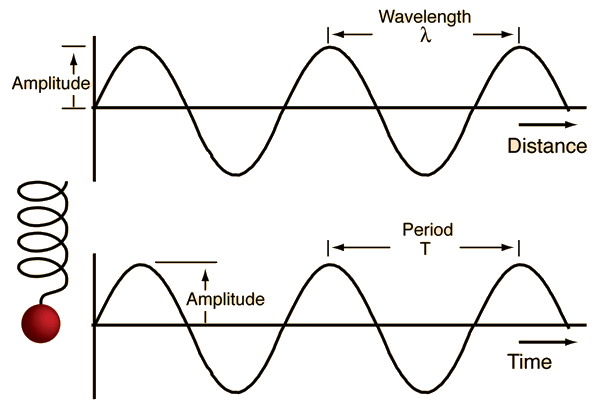Sinusoidal Waves
A single- frequency traveling wave will take the form of a sine wave as a function of distance. The top sine wave in the illustration below is such a sine wave, a transverse wave typical of that caused by a small pebble dropped into a still pool.

The bottom sine wave in the illustration above is a sine wave as a function of time. Such a wave would be produced by plotting the position vs time of a mass on a spring undergoing simple harmonic motion. Or, if the mass on the spring is carried at a constant speed across a room, its position would trace out a sine wave as a function of distance.
Sine waves can be represented mathematically and it can be shown that any wave can be constructed from an appropriate combination of sine waves (Fourier synthesis).
Wave concepts
Resonance concepts
| HyperPhysics***** Sound | R Nave |

